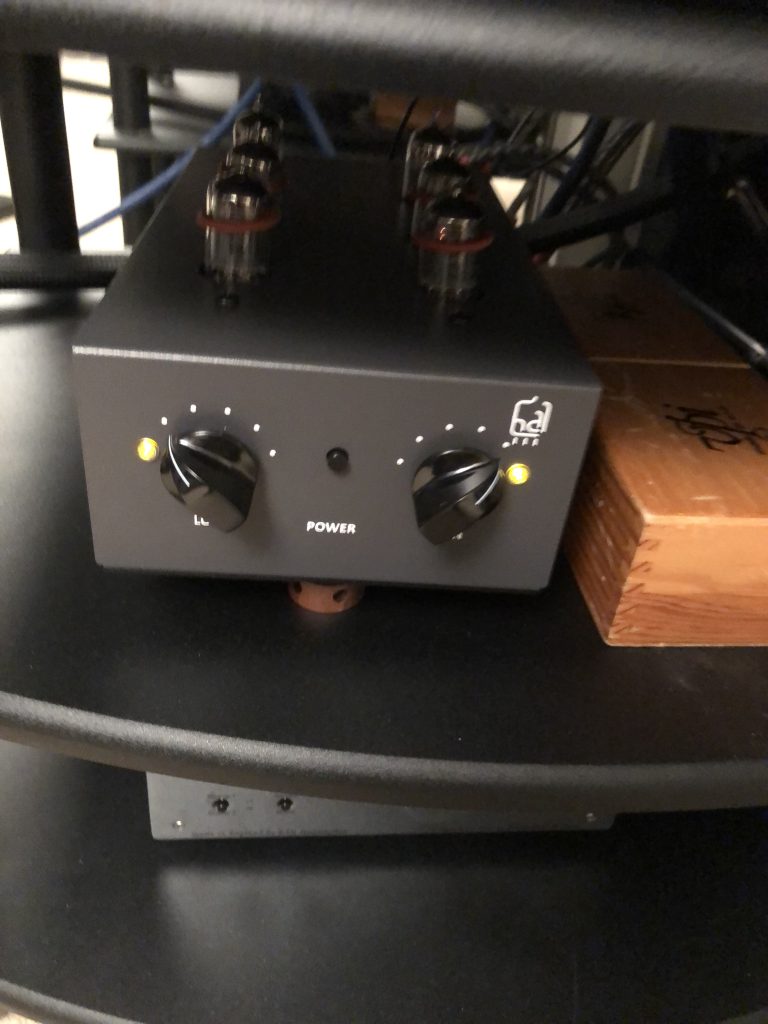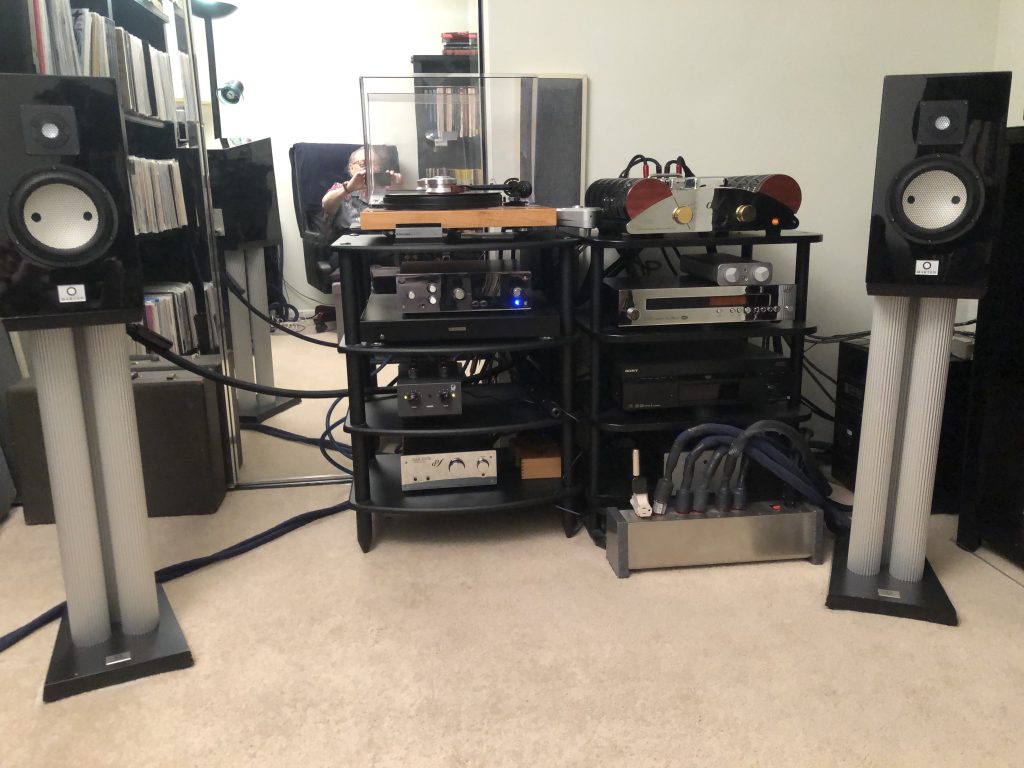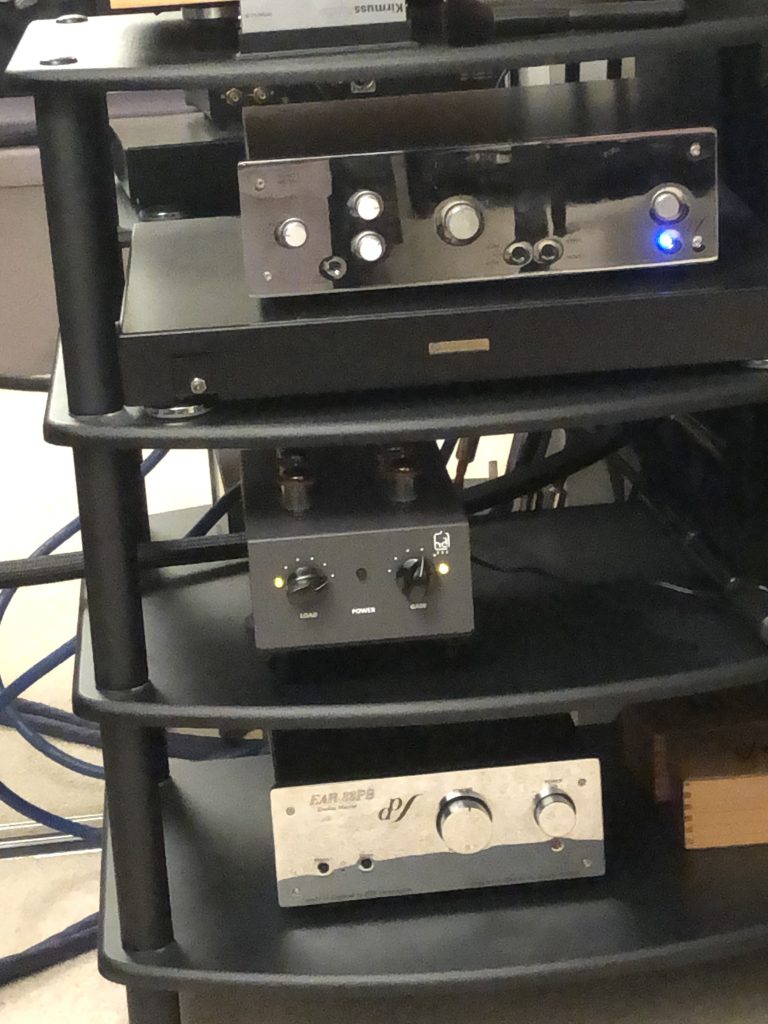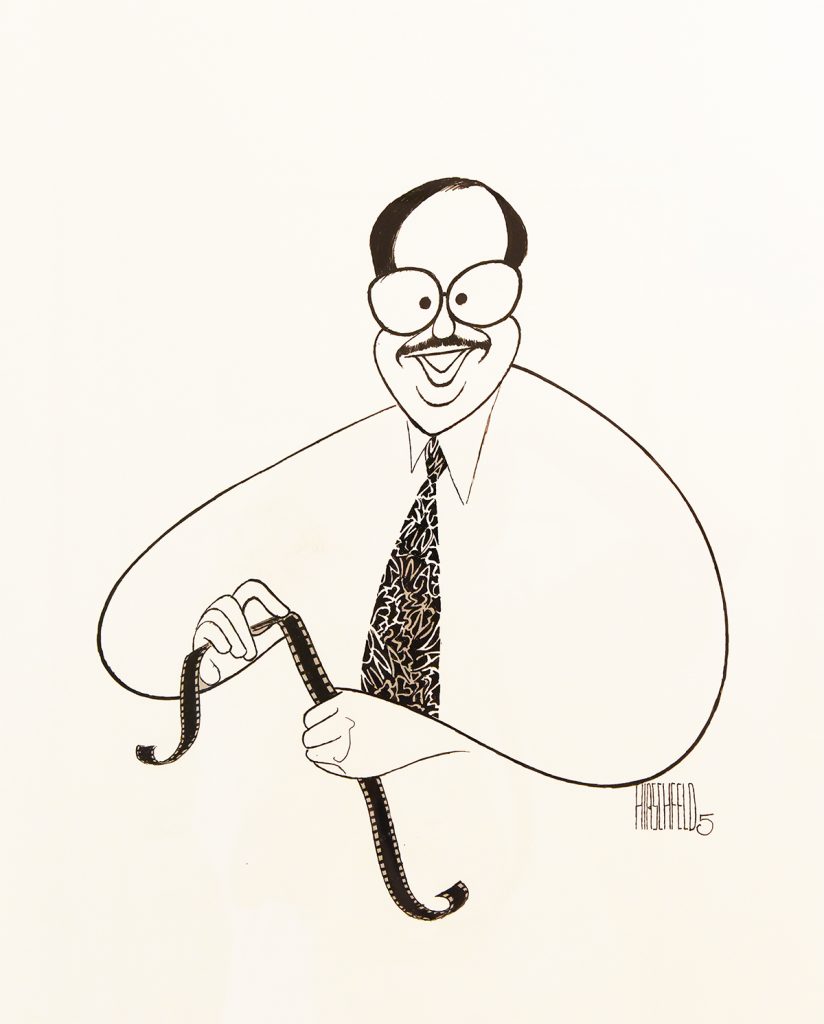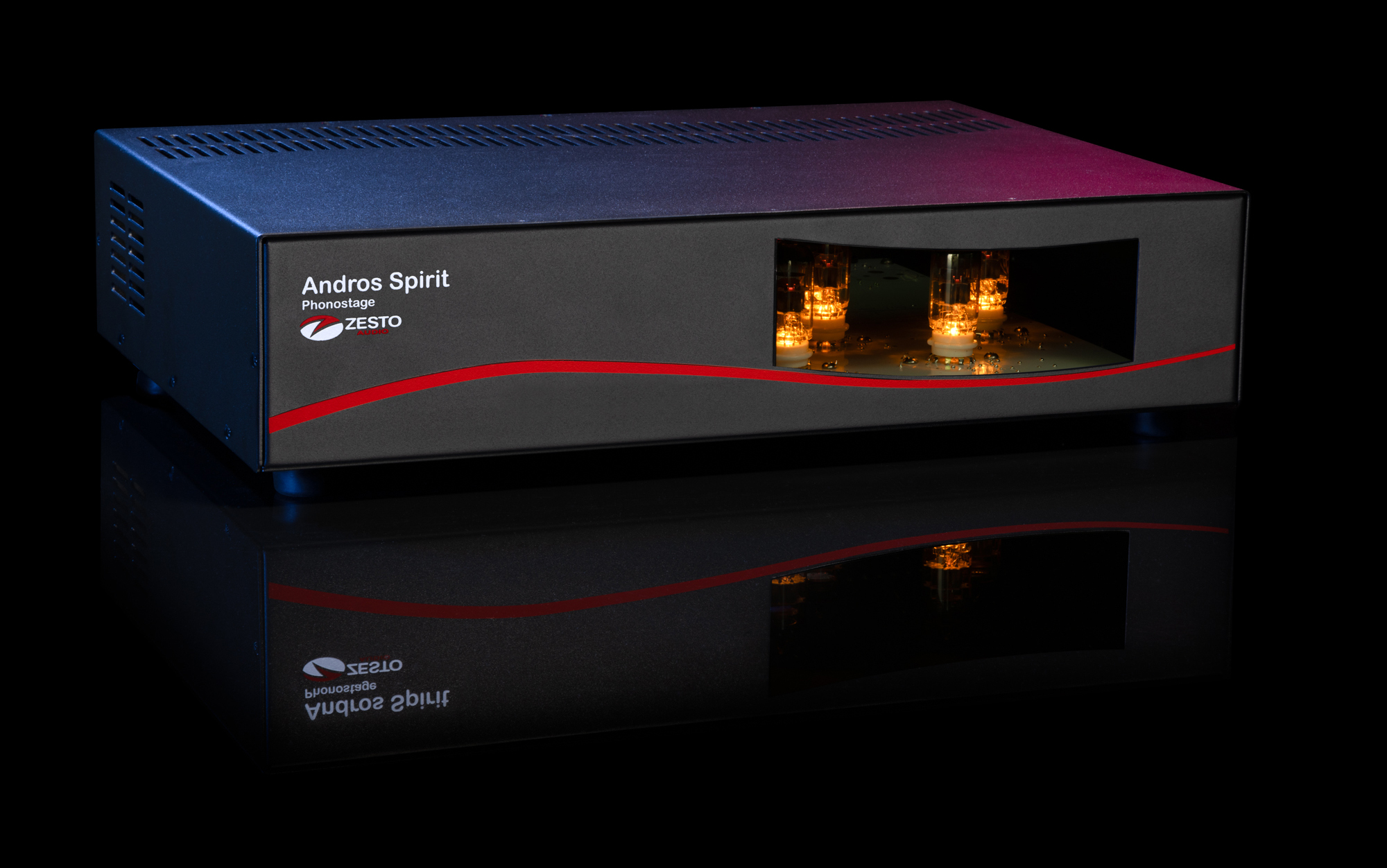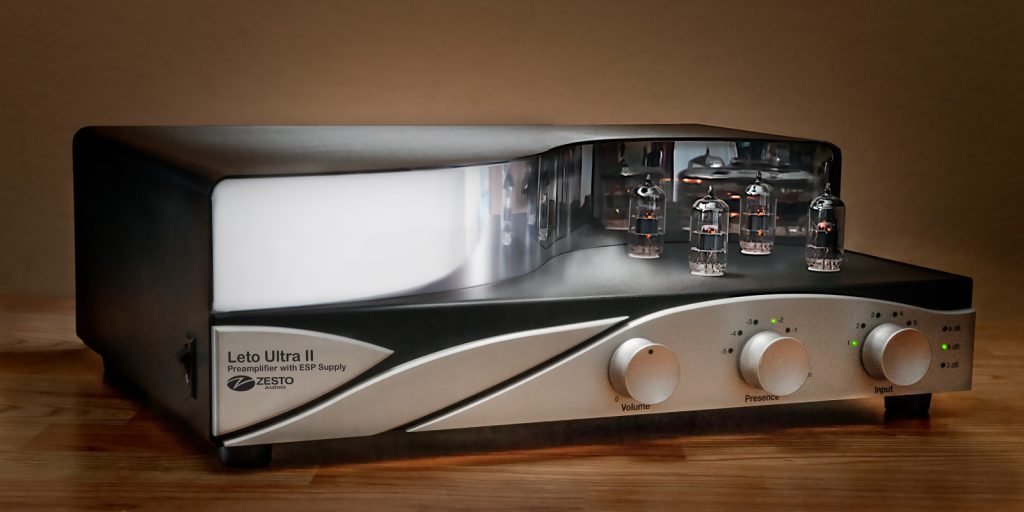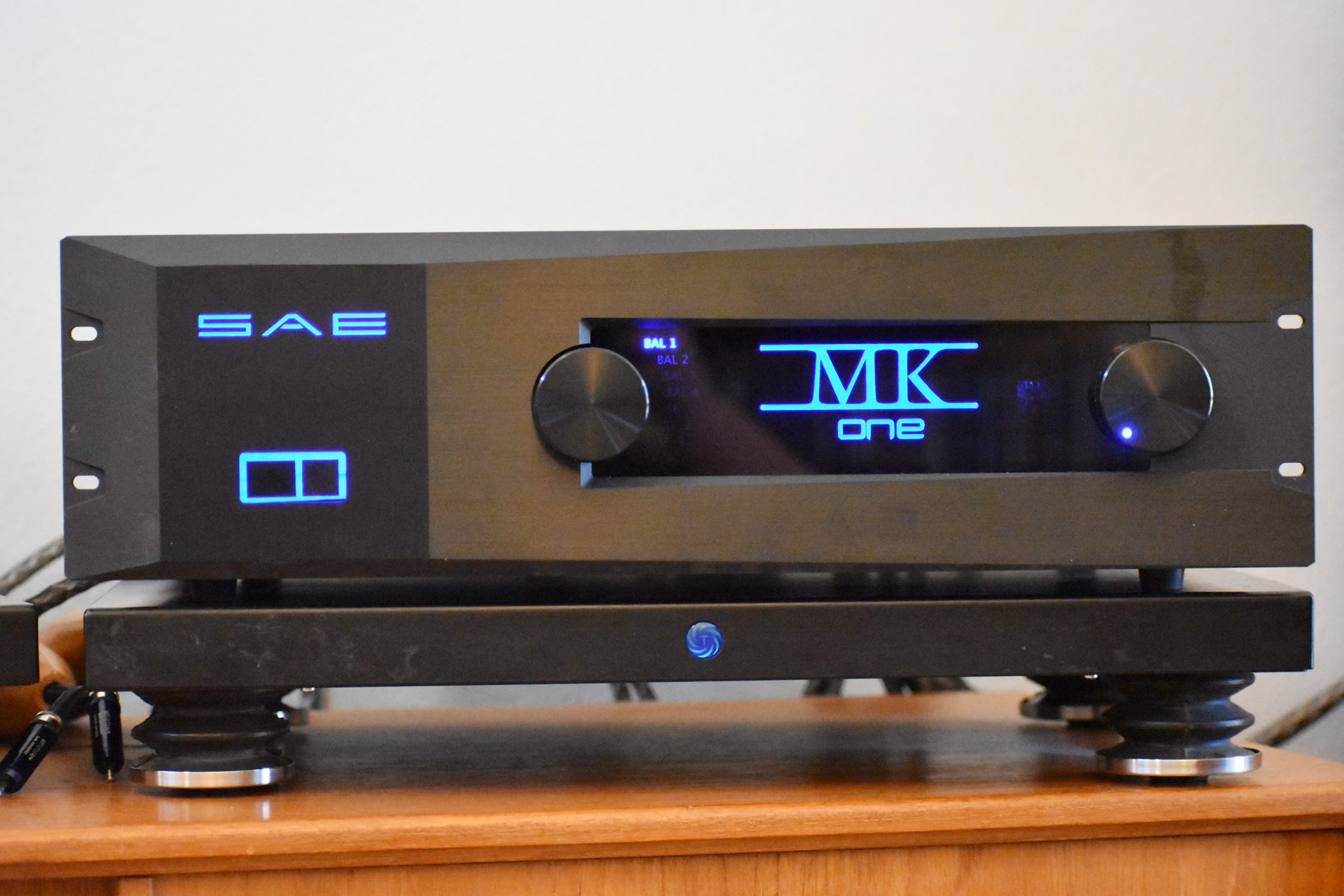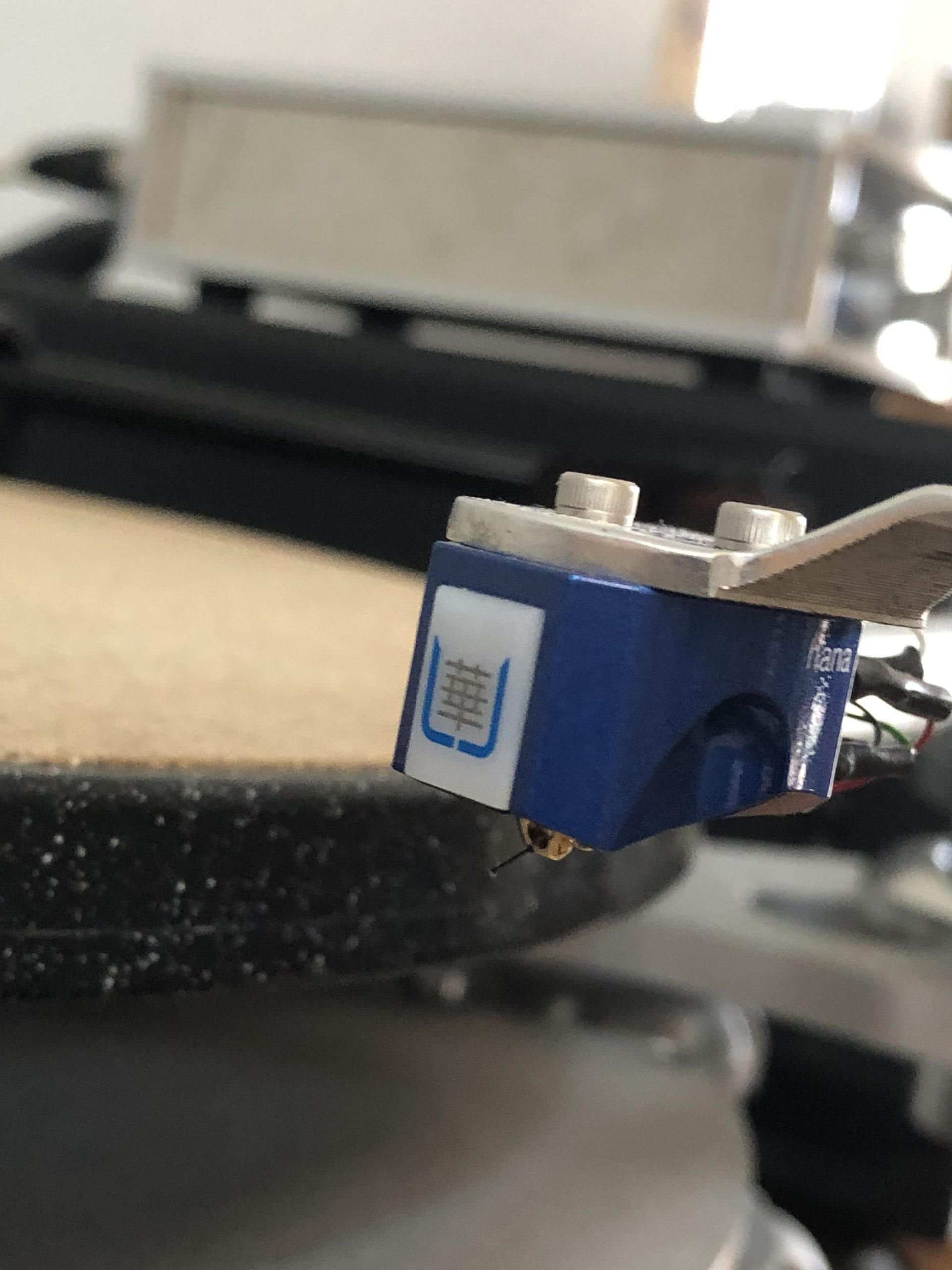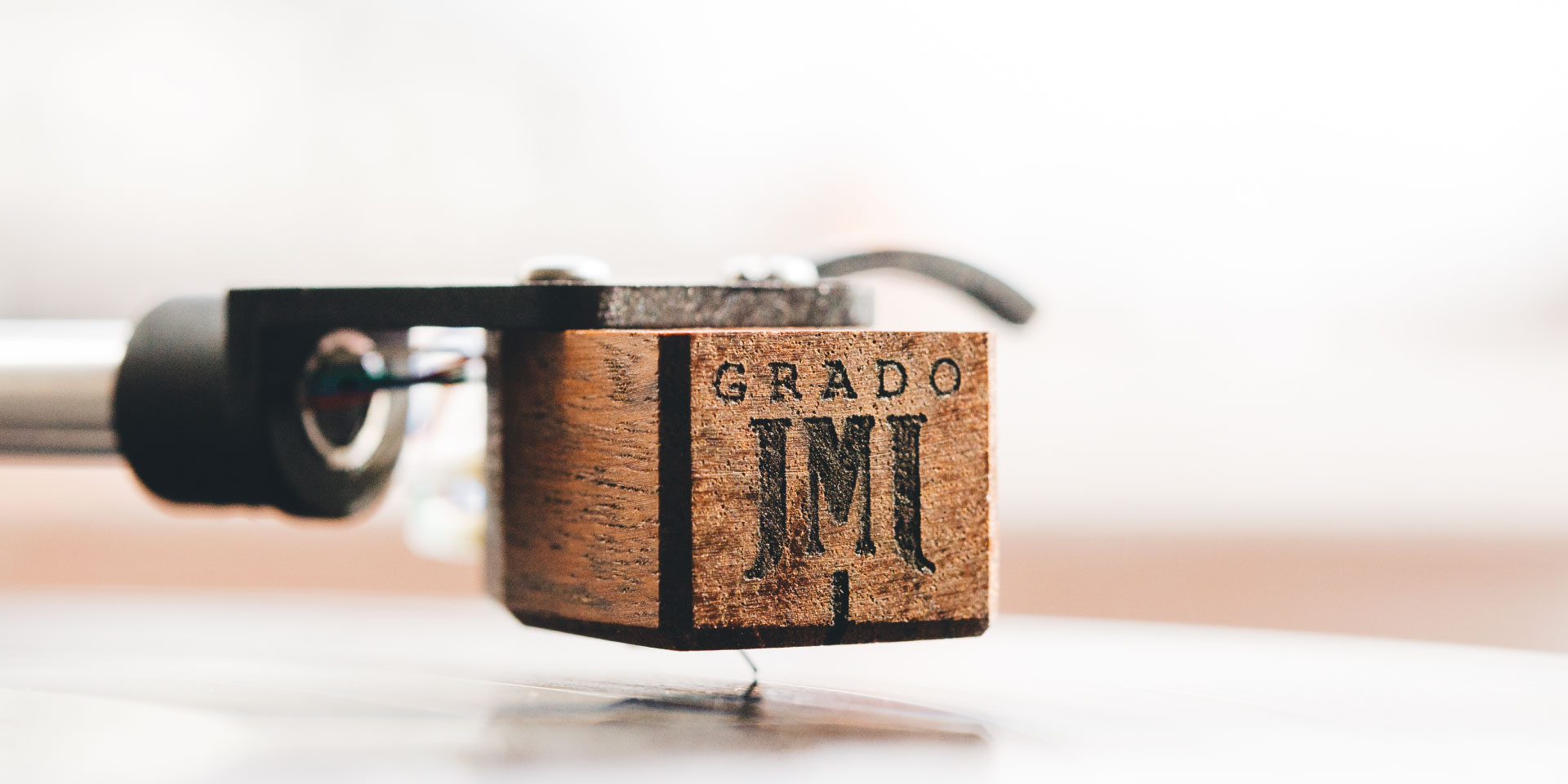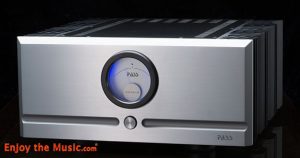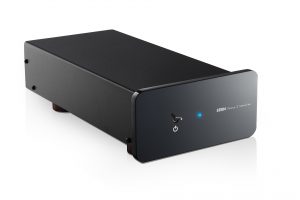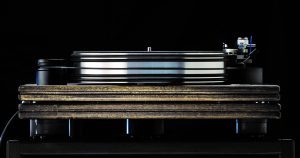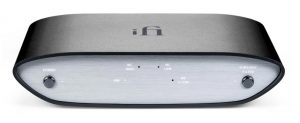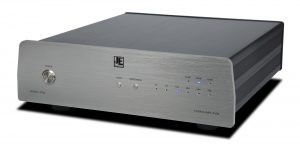This third incarnation of the Trumpet MC Phono Stage is a musical blockbuster. With an amazing purity combined with near reference definition, the listener will be transported to the event as close as the vinyl allows. Very flexible and versatile, the Trumpet heralds a breakthrough performance similar to my reference stages at a quarter of the cost of the phono cables utilized. You may ask how Hagerman Audio utilized modern tube technology and what tweaks I utilized to boost the Trumpet to such musical heights. I shall answer both questions and more in my review forthwith.
Let us begin with the near-field reference system as follows:
- Grado Reference III MI Cartridge and the Hana Umami Blue MC Cartridge
- Project Wood Classic Turntable with Carbon Arm, SteinMusic Carbon Edition Matt, EAT Deluxe Record Clamp, Carbon Fiber Cones under Table Feet.
- Cardas Clear Beyond Cables Phono Cable, Special Order.
- UITaudio.com single-ended Interconnects
- EAR V12 Integrated with Kubala-Sosna Elation PC
- AudioQuest Dragon Speaker Cables
- Marten Duke II Loudspeakers on Marten Duke Stands
Hagerman Labs Description of the circuit:
"This 3rd generation model maintains the superb sonic performance of the original, while cleverly cutting costs via technological advancements. The circuit remains fully balanced from input to output, including the power supply. Equalization is split-passive with no feedback employed anywhere, resulting in a neutral non-fatiguing sonic presentation. Heaters are DC and a highly specialized internal low-noise boost converter generates B+ and B- rails (after a 40-second delay). A novel differential JFET front end provides variable gain and loading capabilities needed for MC operation. With this flexibility, any cartridge can be used, even MM. Premium components are used throughout, such as polypropylene capacitors and metal film resistors. The aluminum chassis has a rugged powder coat and is designed to match the Tuba."
Bob Levi at the LAOC Board Banquet 2023: a moment (photograph and image processing by David W. Robinson)
Specifications
- 47, 100, 220, 470, 1k, 47k ohm input loading
- 48dB, 54dB, 60dB, 68dB, 74dB gain
- 150pF input capacitance
- 10Hz to 50kHz bandwidth (-3dB)
- 70dBA ref 0.5mV signal-to-noise
- 04% @ 3Vrms distortion (1kHz)
- 22Vrms @ 1% overload (1kHz)
- +/-0.5dB equalization
- 12AX7 x 4, 12AU7 x 2
- 6 x 10 x 5.5 inches
- 3 pounds
- 15Vdc @ 2.1A
- 120V/240V operation
- Includes power supply & tubes
I reviewed the original Trumpet 15 years ago and it was a large affair weighing in at about 15 pounds. It cost about $2800 which was not inexpensive back then. I was impressed by its musical abilities and I recall I truly liked it for the price. The Trumpet MK. III is a whole different story.
The Trumpet MC is a three-pound aluminum case with six tubes on top and simple rubber feet. Each tube has a tube damper supplied by Hagerman. It has Inputs and Outputs on the rear all terminated as RCA gold-plated plugs and a grounding post. On the front are two large controls and an on/off button. A light comes on when the unit is first turned on and a second light comes on when the high-powered section is fully on to power the tubes. The Trumpet's left control chooses from five choices for loading, with a 47K choice for MM. The right control chooses from five gain settings all the way to 74dB for the most output-shy MC cartridge.
The Trumpet's unusual circuit is balanced internally though only single-ended inputs/outputs are supplied. This circuit has two 12AU7 Mullard Re-Issue tubes in the input and four 12AX7 tubes in the gain stage, all run in class A with zero feedback. Since matched tubes are not supplied, you will need to play a mono record and move the 12AX7 tubes around until you have a solid center image. Surprisingly, this worked perfectly, and I obtained a tight center image for this review. Be sure to use a real mono record as a stereo record will most surely skew the results even if the center information appears solid.
Do not adjust the Trumpet's loading or gain with the volume up as each click has a very loud pop. You will only do this once I assure you. There has to be some feature like muting left off at this price point.
Once you balance the Trumpet's tubes, put on the tube dampers in the top quarter-inch of each tube and you are ready to play. Plug in the wall wart and push the on button. I placed the external power supply in my main filtered power conditioner as with all other components.
I started with the Grado Reference III Cartridge. The first thing I noticed is that at 47K ohms as with all other settings for moving coil cartridges, the Trumpet is dead quiet within the normal loudness range of the cartridge. This is very special and intriguing to me as only my best phono stages are this quiet. It is due, according to my engineering friends, to the balanced circuit used internally which lowers the noise floor. It may become noisier when the tubes age but changing them every couple of years is a very inexpensive affair to maintain this level of quiet.
Also, according to Jim Hagerman the Trumpet's input stage uses "a pair of matched JFETs per channel. They are not stereo devices per se, but are used as differential pairs, implementing the same balanced architecture that the triodes also employ. Basically, balanced from input to output."
I have never seen this novel approach before.
My friends, I tried to detect any musical artifacts, dryness, etch, etc., with this application of the JFETs in the Trumpet's input. I could not. They are musically invisible. This makes the Trumpet's hybrid circuit perform like an all-tube unit in every conceivable way including tube rolling and the like. I am amazed by the Trumpet as I have never heard a hybrid unit sound like all tubes, ever.
With this fantastically quiet background and flexibility of loading and gain, I began playing LP's on the Trumpet with the Grado Reference III MI cartridge.
The Stock Trumpet's Performance
The Trumpet was very detailed and very musical as supplied. It has very good imaging and is better than anything at the price, or eveb substantially more. I liked it overall, but it is not world-class. I could have stopped there as all reviewers I know of to date have done and offered the Trumpet a good recommendation if one cannot afford more. The Trumpet has a slightly rolled-off high band that does not fully match the Trumpet's very fine mid-range. The bass is overly full, though nicely detailed. If you are running Klipsch speakers with horns you may be very satisfied. The Trumpet was not linear enough for my Duke II's.
Still, I could not get over the amazing quiet of the Trumpet or the flexibility provided at this inexpensive level. Hagerman even provides free shipping and a five-year warranty. He also provides a generous trial period. I had to attempt to tweak it out!
First, I tried tube rolling, but this made no real improvement regardless of the tubes I selected. The Trumpet appears matched to the performance of the Mullard Re-Issues. Major tube equipment manufacturers have to match their units to available tubes, and you do this with capacitor choices and other internal selections. I understand that Gold Lion tubes are an improvement, but I had none on hand.
Next, I focused on the Trumpet's tube dampers. Do you really need one on every tube? These new re-issue tubes are not microphonic. Surprisingly, taking the tube dampers off the two 12AU7 tubes fixed the high-band roll-off and beautifully integrated the high and mid-band ranges. That was easy! The definition improved as did imaging. Soundstage depth also increased. The Trumpet remained just as quiet.
Then I began investigating different isolation feet for the Trumpet to improve the bass. To my great surprise and delight, every type of isolation foot that would fit under the Trumpet improved the bass performance. From sorbothane to carbon or aluminum cones, three of which were placed under the Trumpet, smoothed and refined the bass response and improved the other ranges even more. However, one set of feet offered the greatest improvement and catapulted the Trumpet way beyond its performance in stock form.
The SteinMusic Super Natural Wood Feet, a set of three for $280 at Tweek Geek, was the answer. I placed one in front and two in the back of the Trumpet and the music soared. With the tube dampers removed for the rear pair of tubes and the SteinMusic feet in place, the Trumpet became extraordinarily excellent overall in every musical parameter. There may be another support solution in your inventory, but the Super Naturals were my best. With these easy tweaks, I now review the Trumpet.
The Performance of the (tweaked) Trumpet MC
With the Trumpet, the Grado Reference III cartridge was gorgeous sounding. With tons of definition and tight, beautiful imaging, I noticed its warm Grado touch and slightly liquid character. Yielding a bit of precision and definition let's say to my $7000 reference, the Trumpet was close overall. The soundstage was just a bit less full, but the depth and height were perceptively the same as my reference. The Trumpet's frequency response was very even and natural, if not as sophisticated as the very best, but, again, close.
With the Trumpet, I was able to pump up the Grado's gain like a moving coil but still maintain the load at 47K ohms. The Grado only has a 1mv output so it lacks dynamics at 40-50dBs of gain. I enjoyed a fabulous performance at 68dB of gain with improved signal-to-noise characteristics. Images popped with great musicality and I was swept up in the music instead of the mechanics. I listened to LP after LP with great enjoyment, and with no hint I was listening to an inexpensive Trumpet III.
My Trumpet tweaks became even more obvious with the Hana Umami Blue MC cartridge at .4mv output. I loaded the Blue at 100 ohms and ran the gain up to 74dB with dramatic results. The background was totally silent as piano, voice, and more popped into the room with gorgeous mellifluous sounds. Imaging was tight and rounded with even more detail than the Grado. The bass was layered and deep with power and beauty. The Trumpet took no prisoners as I played my reference LPs, and I just could not believe I was listening to a phono stage this inexpensive. The midrange was powerful and very detailed with a sense of real live music. The highs were extended and slightly sweet with layers of color. The Trumpet's soundstage was huge and deep, enhanced by the jet-black spaces between images. I have two much more expensive references, and neither is more than 10-15% more detailed at six times the cost.
I had three of my golden-eared friends over for their evaluation and all agreed the Trumpet is a fantastic value and a wonderful phono stage for anyone—but particularly for the audiophile with less than $3-4000 to spend. One audiophile said that if it sold for $5000 he would consider it an excellent buy. I most certainly agree. At $1289 including shipping the Trumpet is mind-blowing and pure phono joy. The Trumpet is a tweaker's paradise.
Summary
The Trumpet MC/MM Phono Stage from Hagerman Audio Labs over-achieves its price point and sets a new standard for phono stages under $3000. The Trumpet is competitive to stages even more expensive as it blends tubes and a JFET input with unheard-of effectiveness and musicality. You cannot detect any solid-state tonality which is a first for me. Easy and fun to tweak, one can only improve an already wonderful piece. The Trumpet is Jim Hagerman's finest effort to date and a great joy to review. Though it is very inexpensive, its amazing versatility and musical prowess make it tempting for me to add it to my phono references. That is saying something I assure you.
I most highly recommend the Trumpet Phono Stage if you are looking for a big musical performance for a little money. The Hagerman Trumpet knocks on the door of the best of the high-end. Incredible!
Trumpet MC Phono Stage
Retail: $1289
Hagerman Audio Labs
1521 Alexander St. Apt. 1701
Honolulu, Hawaii 76822
808.383.2704
Jim Hagerman
Photos by Bob Levi, except as noted.




